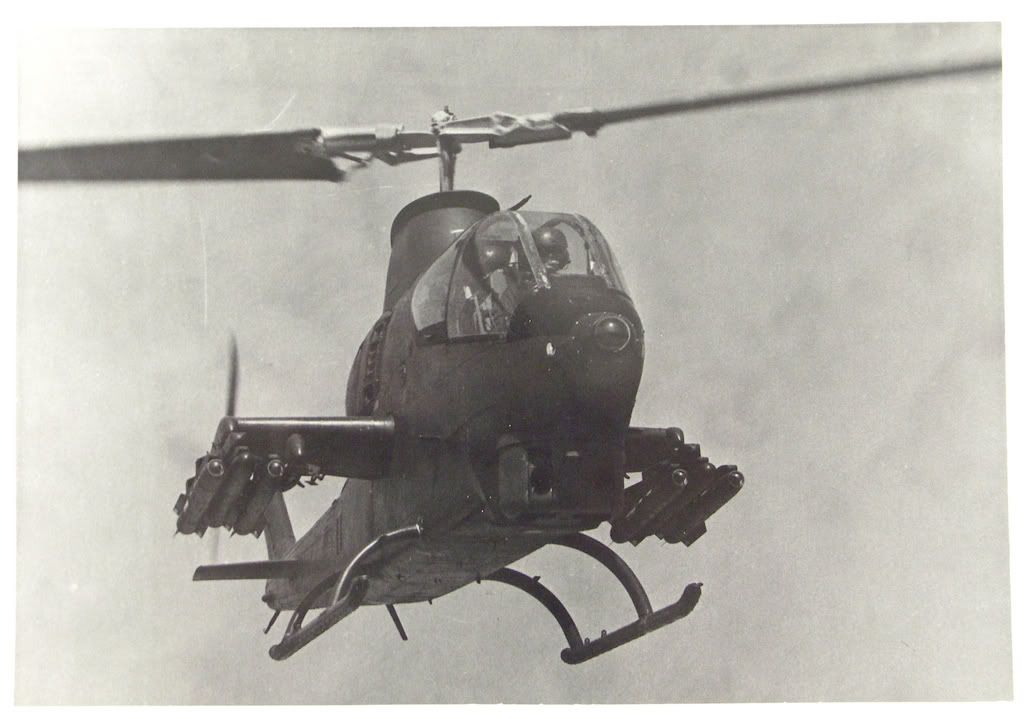Guys,
Here are some photos of a pretty rare and impressive verison of the Loach used by the CIA on a 1972 Vinh wire tap mission (project Main Street) in North Vietnam!!! Initial version of this helo (NOH-6A) was built by the Hughes under Army/ARPA programme and was named ‘‘the Quiet One’’. In fact it was so silent that it could not be heard when passing overhead at 300ft under normall ambient background sounds!!! The Army stopped there, but the project cought the eye of the CIA, who wanted to place wire taps on North Vietnamese communication lines. So the Hughes built an improved version designated NOH-6P/Hughes 500P and boy was it something else!!!
The heart of reducing the sound signature of the loach was a new 5-bladed main rotor with titanium hub and blades with 8-inch trapezoidally shaped tips that reduced tip vortexing (and by that the sound signature). Also a more powerfull -20 Allison enigine was installed with water/ethanol injection system that boosted engine power for take-offs. Tail rotor was replaced with a 4-bladed staggered mounting unit and 3.5-inches longer blades and was also mounted more to the rear to compensate for longer blades (some sources claims that main rotor blades were also longer, but I am not 100% sure of that). Engine and transmission compartments were fitted with sound-proofing material, engine intake was shrouded to further reduce trasmission/engine whine, exhaust was fitted with a resonator to lower the roar of the engine, … All the gears and transmission elements were smoothened to eliminate ‘‘grinding’’ noises. The extra main rotor blade allowed the bird to operate at 66% normal rotor rpm (an important contributing factor to reducing noise levels).
Now, if You think this is pretty impressive, wait to hear for the electronic/avionics package description…
LORAN C and INS navigation systems were fitted inside two aerodynamic pods mounted on both sides of the chopper. OH-6Ps were equiped with Radar altimeter and Radar Warning Receivers. AN/AAQ-5 FLIR with two liquid nitrogen coolant bottles was installed under the chin. Some Infra-red spot lights were fixed to skids and fuselage of the Quiet ones to enhance performance of SU-50 NVGs worn by the pilot ![]() Of course, radical modifications to the cockpit were also done (still trying to find cockpit shots).
Of course, radical modifications to the cockpit were also done (still trying to find cockpit shots).
Not only were these birds able to take-off with all this load and two pilots, but they also carried two Lao commandos, who would place the wire taps!!!
The original Army/ARPA NOH-6A:
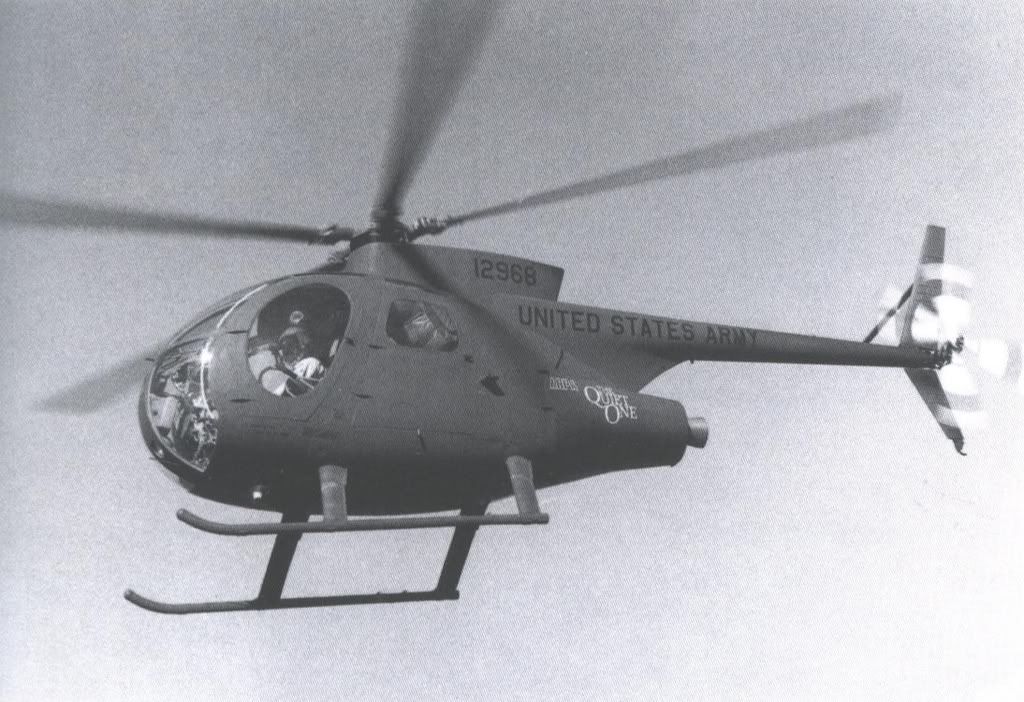
Close-up of the NOH-6A main rotor hub:
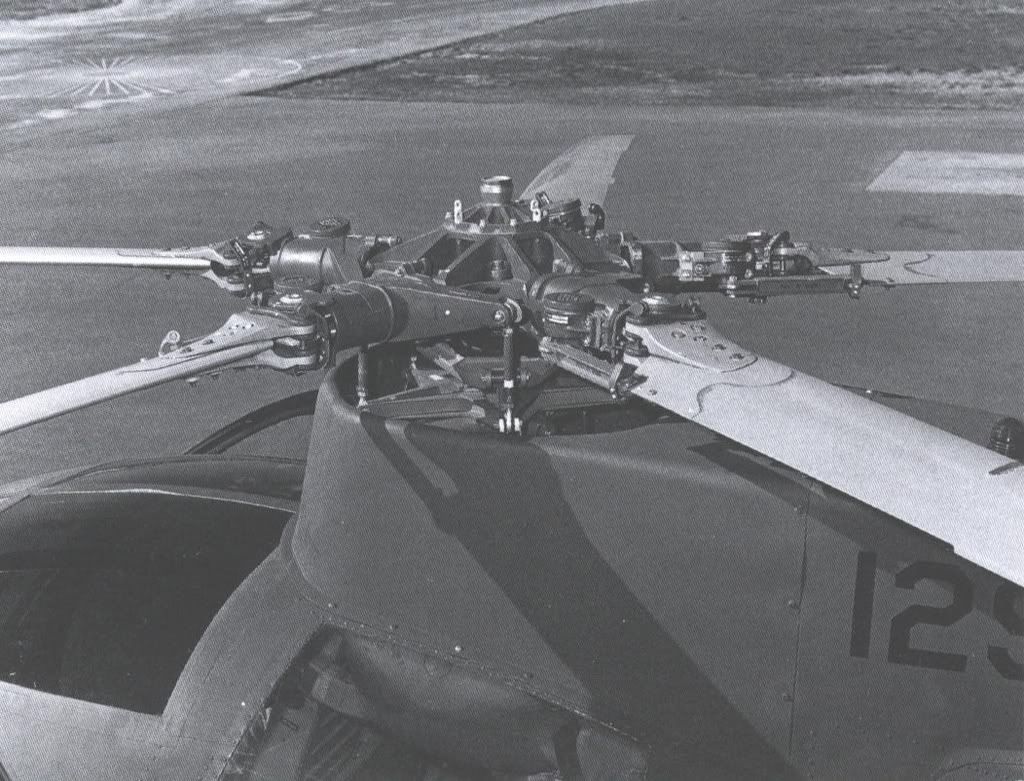
Close-up of the tail rotor (note the extended tail skid, which was neccessary to compensate for longer tail rotor blades):
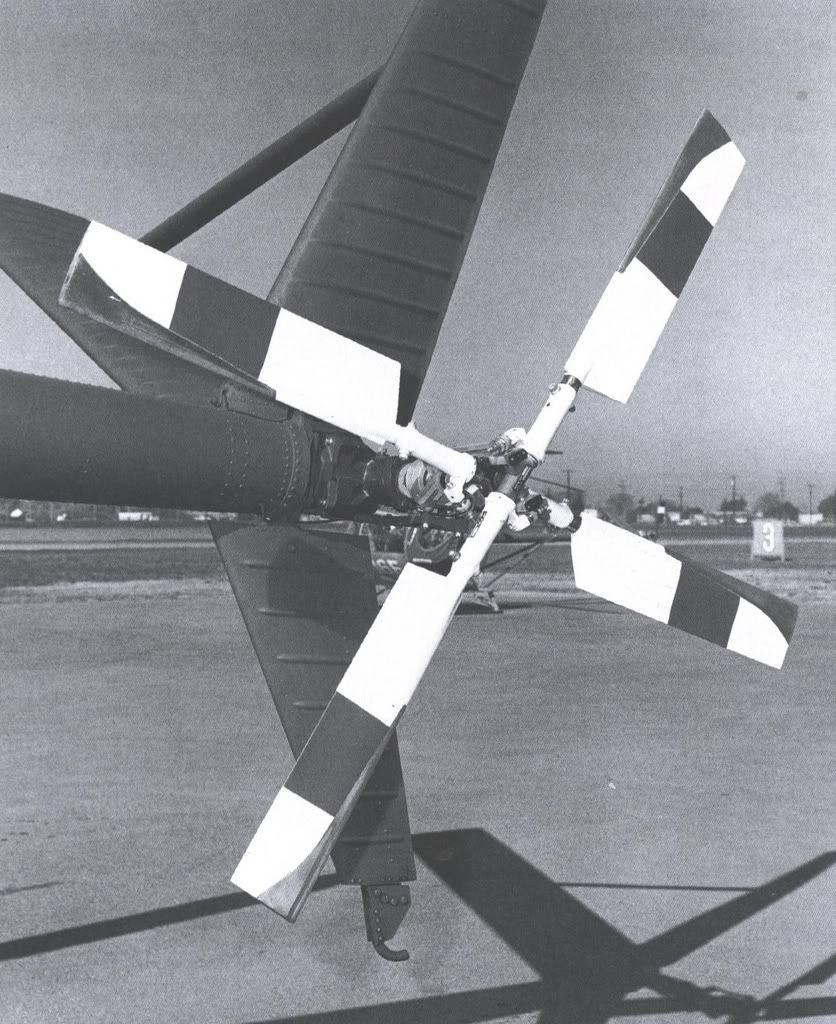
A colour image of a CIA operated Hughes 500P in late 1972 at PS-77 (Laos):
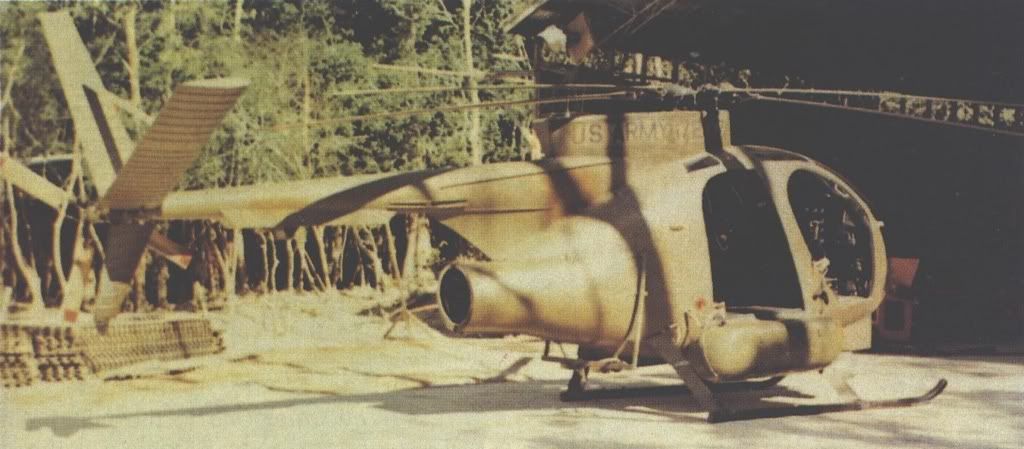
Head-on shot of a CIA operated Hughes 500P (note the AN/AAQ-5 FLIR turret under the nose and how much smaller it was when compared to AN/AAQ-5 on UH-1M or AH-1G SMASH):
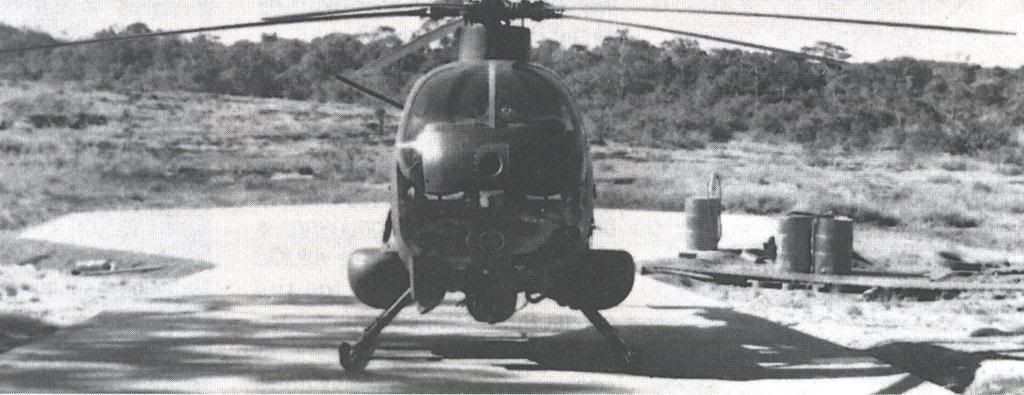
Here are some Taiwanese AF (RoCAF) officials examining the Hughes 500P cockpit (it was initially planned to have RoCAF pilots flying the 500Ps on the actual mission, but US pilots did in the end):
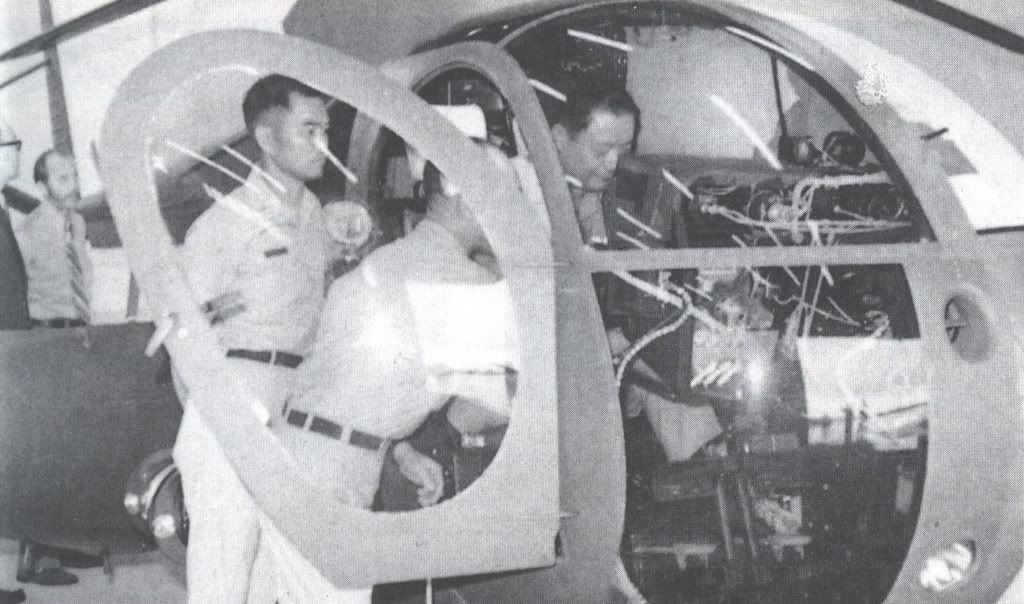
The last shot of a NOH-6P was taken in early 1990s, but it is the only I could find that shows the FLIR turret (at least I think this is the original AN/AAQ-5 turret) and main rotor tips in some detail (the larger nose mounted FLIR turret was a later addition; not used in 1972):
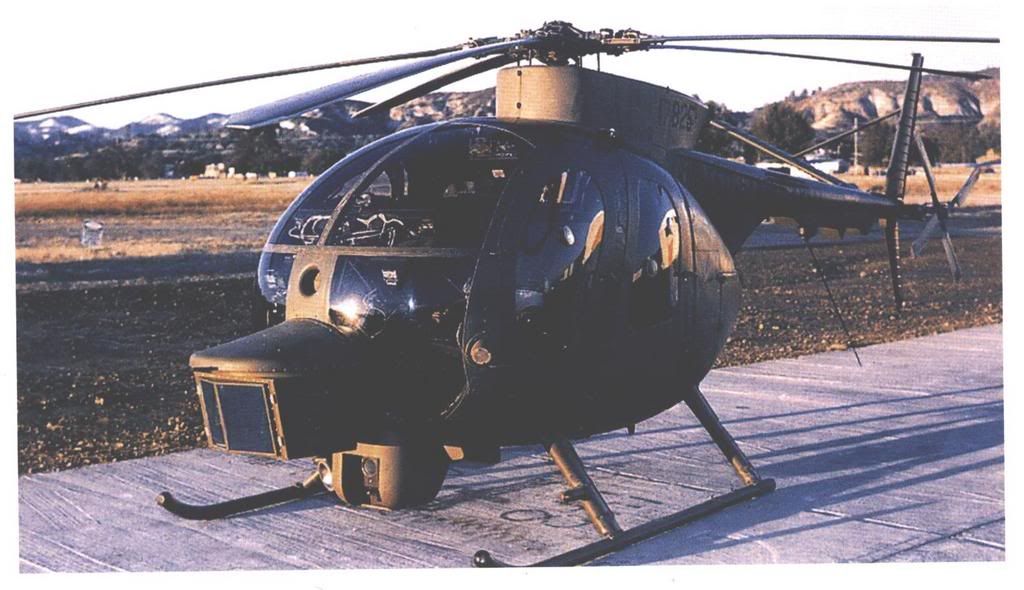
Enjoy the images guys,
Marko




